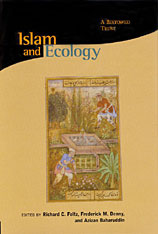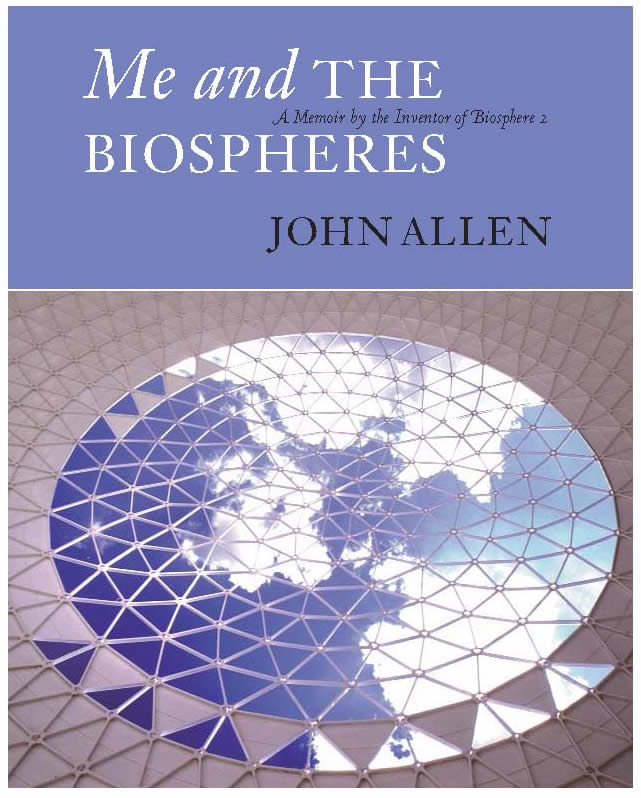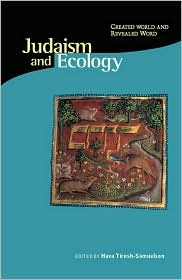Buddhism and ecology: The Interconnection of Dharma and Deeds
Edited by Mary Evelyn Tucker and Duncan Ryuken Williams
Reviewed by Steven Heine
| p. 136-138 | Buddhism and Ecology: The Interconnection of Dharma and Deeds |
Philosophy East & West, Vol. 51, No. 1 (2001) |
 Buddhism and Ecology: The Interconnection of Dharma and Deeds, edited by Mary Evelyn Tucker and Duncan Ryuken Williams, is the first book in the series on "Religions of the World and Ecology" edited by Mary Evelyn Tucker and John Grim. The book series is an outgrowth of a series of conferences held from 1996 to 1998 at the Harvard University Center for the Study of World Religions, funded primarily by the V. Kann Rasmussen Foundation in addition to a variety of other sources. Each volume of the series is to be edited by Tucker along with a specialist in the respective tradition. By the time this review appears, several other volumes will have been published, including books on Hinduism and Confucianism. The aim of the series is to examine the similarities and differences in the attitudes of world religions to ecological issues in an era in which " f rom resource depletion and species extinction to pollution overload and toxic surplus, the planet is struggling against unprecedented assaults ... that are aggravated by population explosion, industrial growth, technological manipulation, and military proliferation heretofore unknown by the human community" (p. xv). The series editors hope to stimulate "scholars of religion to respond as engaged intellectuals with deepening creative reflection" (pp. xxx-xxxi) rather than remain as seemingly uninvolved armchair observers of the ongoing environmental crisis.
Buddhism and Ecology: The Interconnection of Dharma and Deeds, edited by Mary Evelyn Tucker and Duncan Ryuken Williams, is the first book in the series on "Religions of the World and Ecology" edited by Mary Evelyn Tucker and John Grim. The book series is an outgrowth of a series of conferences held from 1996 to 1998 at the Harvard University Center for the Study of World Religions, funded primarily by the V. Kann Rasmussen Foundation in addition to a variety of other sources. Each volume of the series is to be edited by Tucker along with a specialist in the respective tradition. By the time this review appears, several other volumes will have been published, including books on Hinduism and Confucianism. The aim of the series is to examine the similarities and differences in the attitudes of world religions to ecological issues in an era in which " f rom resource depletion and species extinction to pollution overload and toxic surplus, the planet is struggling against unprecedented assaults ... that are aggravated by population explosion, industrial growth, technological manipulation, and military proliferation heretofore unknown by the human community" (p. xv). The series editors hope to stimulate "scholars of religion to respond as engaged intellectuals with deepening creative reflection" (pp. xxx-xxxi) rather than remain as seemingly uninvolved armchair observers of the ongoing environmental crisis.
Buddhism may be a likely candidate for the first religious tradition to be examined in the book series because it appears to have a special affinity with environmental concerns and causes for several reasons. The basic Buddhist philosophy of karmic causality and dependent origination stresses the interdependence of all sentient beings who participate in transmigration throughout the six realms; the nonduality of humans and nature; and the moral retribution that awaits those who violate the sanctity of existence. This nondualistic worldview is enhanced, especially in Mahayana Buddhism in East Asia, by interaction with the organic cosmology of indigenous Chinese religions based on yin-yang ideology, and the result is a pantheistic notion that, according to Lewis Lancaster, asserts that "(t)he rocks, trees, lotuses, streams, mountains -- all have Buddha-nature" (p. 13).



 Books
Books


 Religions of the World and Ecology 9
Religions of the World and Ecology 9 Me and the Biospheres:
Me and the Biospheres:


